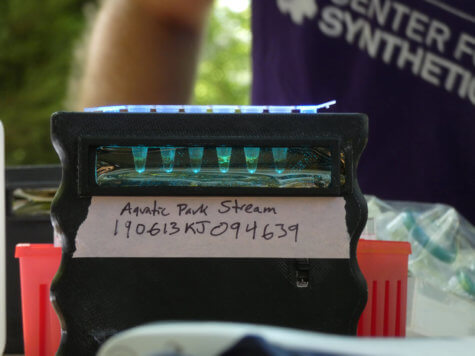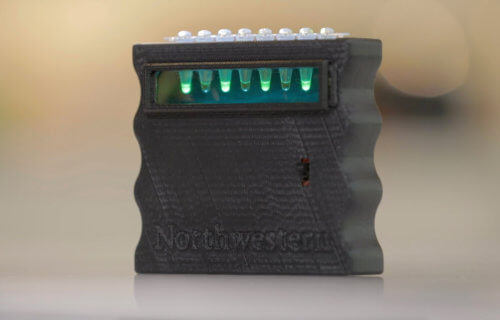CHICAGO — Exciting news for campers, hikers, or people living in cities with questionable water quality. A new low-cost handheld device lets users know within minutes if water is safe to drink. It “tastes” water using electronic buds that can tell users if it is contaminated.
The device works by using powerful and programmable genetic networks which mimic electronic circuits, to perform a range of logic functions. Scientists from Northwestern University say that it generates a digital output on eight tubes that tells users how high the concentration of contaminant is. If it’s just one then it’s completely safe, and if it’s eight then users will know to avoid the water.
Nicknamed “ROSALIND 2.0” after famed chemist Rosalind Franklin, the water-testing device can sense 17 different contaminants in a single drop.
In the evolved version of the device, it does not only have molecular tastebuds, but a “molecular brain” too. This offers different contaminant percentages and which can provide strategies on how to deal with it. For example, a low level of lead in the water can be dealt with by flushing water lines.
The new system was demonstrated by showing it could successfully detect different concentration levels of zinc, an antibiotic and an industrial metabolite.

“We programmed each tube to have a different threshold for contaminations. The tube with the lowest threshold will light up all the time. If all the tubes light up, then there is a big problem. Building circuits and programmable DNA computing opens up many possibilities for other types of smart diagnostics,” says study co-author Julius B. Lucks, of the university’s engineering school, in a statement. “We found out how bacteria naturally taste things in their water. They do so with little molecular-level ‘taste buds.’
Cell-free synthetic biology allows us to take those little molecular taste buds out and put them into a test tube.
“We can then ‘re-wire’ them to produce a visual signal. It glows to let the user quickly and easily see if there’s a contaminant in the water,” says Lucks. “The initial platform was a bio-sensor, which acted like a taste bud. Now we have added a genetic network that works like a brain. The biosensor detects contamination, but then the output of the bio-sensor feeds into the genetic network, or circuit, which works like a brain to perform logic.
“After we introduced ROSALIND, people said they wanted a platform that could also give concentration amounts,” he continues. “Different contaminants at different levels require different strategies. If you have a low level of lead in your water, for example, then you might be able to tolerate it by flushing your water lines ahead of using them. But if you have high levels, then you need to stop drinking your water immediately and replace your water line.”
Lucks compares the technology to at-home COVID-19 tests, which allow people to make decisions regarding their health on the spot.
“It’s similar with water. There are many cases where water quality needs to be measured routinely. It’s not a one-time thing because contamination levels can change over time,” he says.
The study is published in the journal Nature Chemical Biology.
South West News Service writer Joe Morgan contributed to this report.
